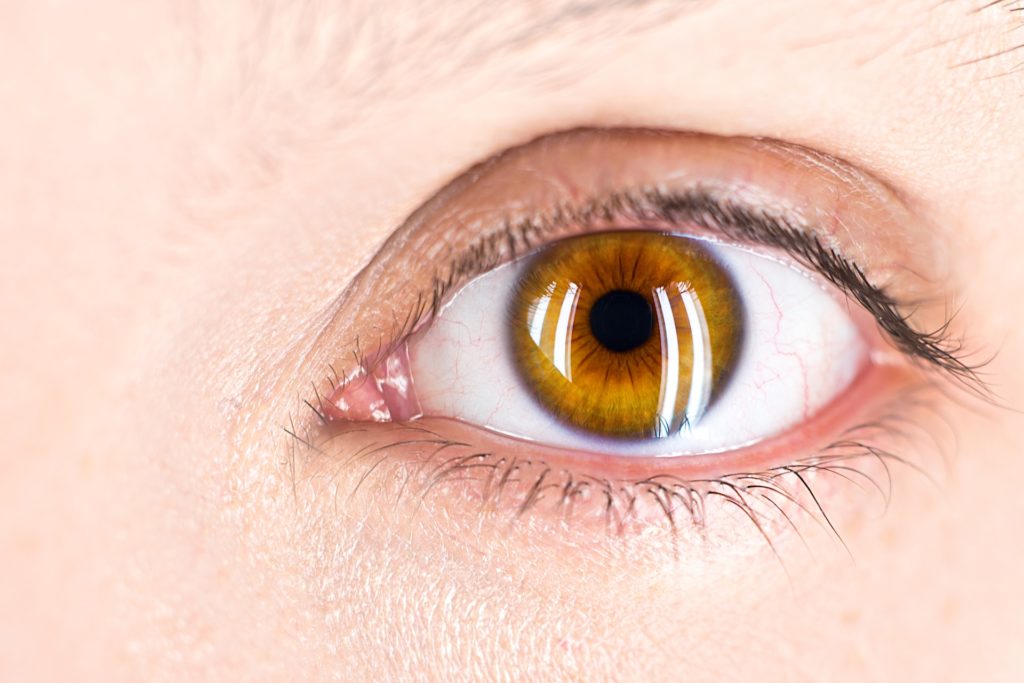IPL has been shown to be effective for MGD and to reduce eye inflammation, although a nuanced approach has yet to be defined.

Meibomian gland dysfunction can manifest in dry eye symptoms and in eyelid discomfort, due to disturbances in the tear film.
Meibomian gland dysfunction (MGD) is the term used for a collective number of disorders, whether congenital or acquired, that is defined by abnormalities in meibomian glands. Meibomian glands are the sebaceous glands in the eyelids, and MGD can lead to changes in the tear film, eyelid discomfort, and dry eyes.
MGD is graded according to severity, and in patients with mild disease, lid hygiene (simply cleaning the eyelids and removing dirt and makeup) would suffice. However, in more severe cases, other therapeutic options are necessary.
Intense pulsed light (IPL) treatment was first used for MGD in 2015, and it is now accepted as standard for moderate to severe MGD, as this has been shown to decrease ocular inflammation. However, there is hesitation to use this modality in patients with mild disease, as the benefits may be less and the cost be a burden. In addition, the utility of IPL on top of MG expression (MGX) and is debatable.
This is a prospective clinical study in which 60 patients with MGD stage 2-3 (mild to moderate) were stratified into either IPL or self-hygiene treatments. In addition, 110 patients with MGD stage 3-4 (moderate to severe) were assigned to either receive IPL only or in addition to MGX. Outcome measures were MGD stage after treatment, observations on the ocular surface, and functionality of the meibomian gland. Population characteristics were comparable between the two treatment groups in each part of the study.
Results showed that in patents with MGD stage 2-3, both groups, whether treated with IPL or only lid hygiene, the ocular surface disease index (OSDI) and the tear breakup time (TBUT) were improved compared to baseline. There was no statistical difference between the two treatment groups, however, although the posttreatment response rate ranged from 64.3-66.7%. As a side note, the OSDI is a 12-item questionnaire used to assess dry eye symptoms and its effects on vision-related function in the past week. It has 3 subscales: ocular symptoms, vision-related function, and environmental triggers. Meanwhile, TBUT is clinically assessed by instilling fluorescein drops in the eye and measuring the time it takes for it to be washed out. TBUT is an assessment of evaporative dry eye disease.
Meanwhile, in the other part of the study with patients with MGD stage 3-4, the group treated with IPL + MGX had better improvements and a higher response rate (75.5%) than those who only received IPL (63.3%). In addition, when analyzing for differences in MG function and OSDI, there was no statistical difference found among patients with different ages, genders, and exposure to IPL energy. However, it was found that patients with a higher Fitzpatrick scale had greater improvement when MG expression was also done. (The Fitzpatrick scale describes the different skin phototypes from light to dark based on the amount of melanin and is used in dermatology to assess risk to sun exposure and skin cancer.)
One of the limitations of this study is the short time of follow-up. Nevertheless, this study concluded that self-eyelid hygiene is cost-effective for the management of mild MGD. Meanwhile, combining MGX with IPL is necessary in more severe stages. Also, patients with darker skin may benefit more with MG expression.
Yin, Y., Gong, L., & Lu, Y. (2022). The approach of intense pulsed light treatment in patients with different severities of meibomian gland dysfunction. Current Eye Research, 1–7. https://doi.org/10.1080/02713683.2022.2147955